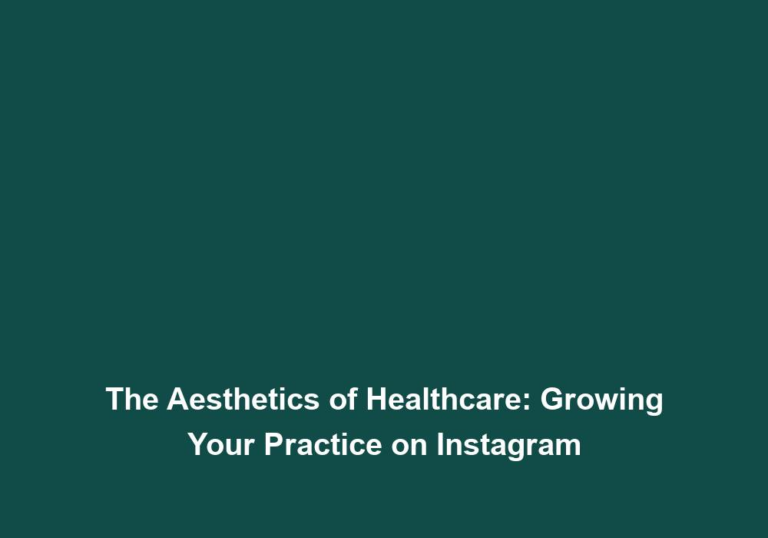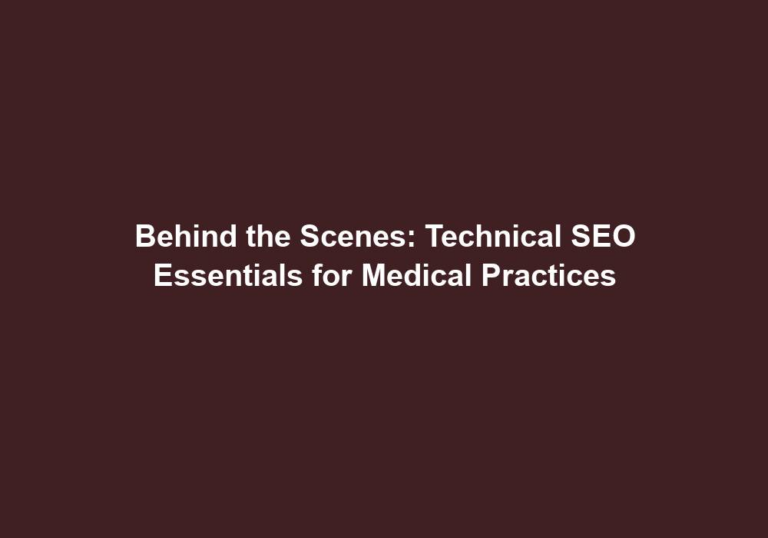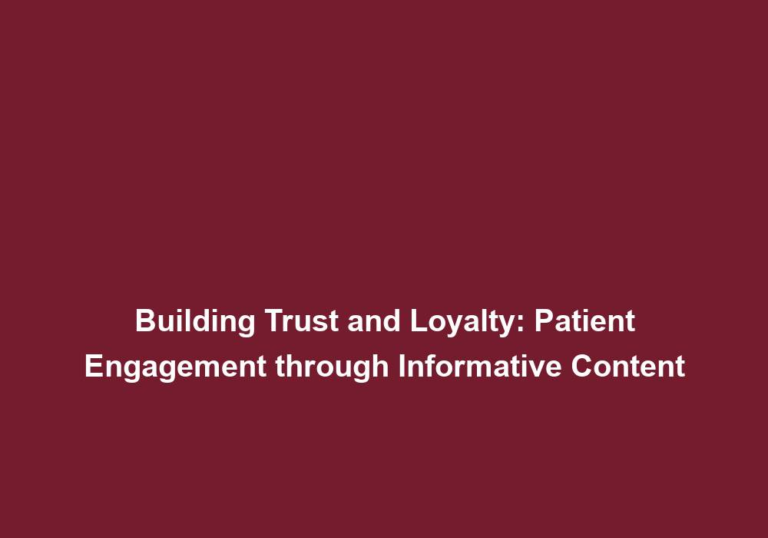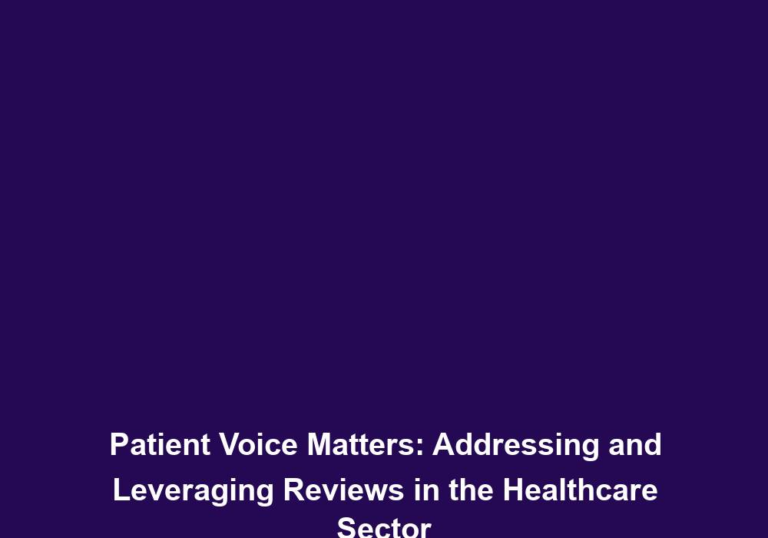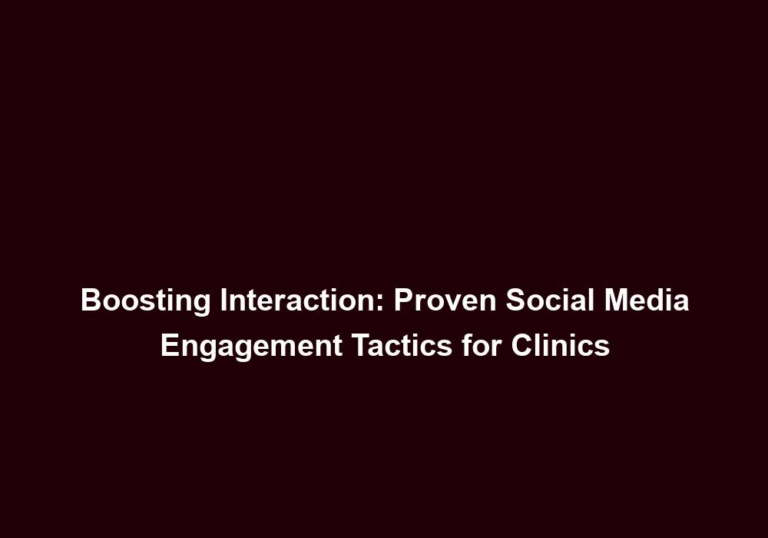Healthcare Digital Marketing: SEO & Content Management Strategies for Success
In today’s digital age, healthcare providers and organizations need to have a strong online presence to effectively reach and engage with their target audience. Implementing effective digital marketing strategies, particularly search engine optimization (SEO) and content management, can greatly enhance a healthcare organization’s online visibility and drive more traffic to their website. In this article, we will explore the key strategies and best practices for successful healthcare digital marketing.
Importance of Healthcare Digital Marketing
Digital marketing has become an essential component of any successful healthcare marketing strategy. With the majority of people now turning to search engines like Google to find information about healthcare providers, services, and medical conditions, it is imperative for healthcare organizations to establish a strong online presence to connect with these potential patients. Implementing effective SEO and content management strategies can help healthcare providers rank higher in search engine results, increase website traffic, and ultimately, attract more patients.
Search Engine Optimization (SEO) for Healthcare Websites
- Keyword Research: Conducting thorough keyword research is crucial for healthcare providers to identify the phrases and terms that potential patients are searching for. By understanding these keywords, healthcare organizations can optimize their website content to align with the search intent of their target audience.
- Start by brainstorming a list of relevant keywords and phrases related to your healthcare services and specialties.
- Use keyword research tools like Google Keyword Planner or SEMrush to identify high-volume and low-competition keywords.
- Optimize your website content by incorporating these keywords naturally into your headings, paragraphs, and meta tags.
- Regularly review and update your keyword strategy to stay relevant and competitive in the search rankings.
- On-Page Optimization: Optimizing various on-page elements of a healthcare website can significantly improve its search engine rankings. This includes optimizing title tags, meta descriptions, header tags, and URLs with relevant keywords, ensuring that the website is easily crawlable by search engines, and improving overall user experience.
- Craft compelling and keyword-rich title tags and meta descriptions that accurately describe the content of each web page.
- Use header tags (H1, H2, H3) to structure your content and make it more easily scannable for both users and search engines.
- Optimize your URLs to include relevant keywords and make them shorter and more user-friendly.
- Improve the website’s load speed by optimizing image sizes, minifying CSS and JavaScript files, and leveraging browser caching.
- Content Creation: Developing high-quality and informative content is key to attracting and engaging potential patients. Healthcare providers should create relevant and valuable content that addresses the needs, concerns, and questions of their target audience. Content can include blog posts, articles, infographics, videos, and more.
- Conduct thorough research on the topics that resonate with your target audience and align with your healthcare services.
- Create comprehensive and well-researched blog posts that provide actionable tips, advice, and insights.
- Incorporate relevant keywords naturally into your content to improve its visibility in search engine results.
- Use a mix of content formats like videos, infographics, and podcasts to cater to different learning preferences and engage a wider audience.
- Regularly update and repurpose your content to keep it fresh and relevant for both users and search engines.
- Local SEO: For healthcare organizations that primarily serve a specific geographic area, implementing local SEO strategies is essential. This involves optimizing the website for location-based keywords, creating and optimizing Google My Business listings, and generating positive reviews from patients.
- Include location-based keywords in your website’s content, meta tags, and URLs to improve its visibility in local search results.
- Create and optimize your Google My Business listing with accurate and up-to-date information about your healthcare services, contact details, and opening hours.
- Encourage your patients to leave positive reviews on platforms like Google, Yelp, and Healthgrades to build trust and credibility.
- Consistently monitor and respond to patient reviews to show that you value their feedback and are committed to providing excellent care.
- Mobile Optimization: With the increasing use of smartphones and mobile devices, it is crucial for healthcare websites to be mobile-friendly. Mobile optimization ensures that the website loads quickly, is easy to navigate, and provides a seamless user experience across different devices.
- Use responsive web design to create a website that automatically adjusts its layout and content based on the user’s device.
- Optimize your website’s loading speed by minimizing unnecessary elements, compressing images, and leveraging browser caching.
- Ensure that your website’s navigation is intuitive and user-friendly on smaller screens.
- Test your website’s mobile-friendliness using tools like Google’s Mobile-Friendly Test and make necessary optimizations based on the results.
Content Management Strategies for Healthcare Websites
- Content Calendar: Developing a content calendar is essential for healthcare organizations to plan and organize their content creation efforts. A content calendar helps in maintaining a consistent publishing schedule, ensuring a steady flow of fresh and relevant content on the website.
- Identify key themes and topics that align with your healthcare organization’s goals and target audience interests.
- Plan your content creation schedule in advance, considering important events, holidays, and seasonal trends.
- Assign responsibilities to team members and establish deadlines to ensure timely content production.
- Use project management tools like Trello or Asana to collaborate and track progress on content creation.
- Regularly review and update your content calendar to reflect any changes or new opportunities.
- Patient Education: Providing valuable and accurate information to patients is a vital aspect of healthcare content management. Healthcare providers can create educational content that addresses common medical conditions, treatment options, preventive measures, and more. This not only helps patients make informed decisions but also establishes the healthcare organization as a trusted source of information.
- Identify the most common questions, concerns, and misconceptions that patients have about your healthcare services or medical conditions you specialize in.
- Create informative and easy-to-understand content that addresses these questions and provides actionable advice.
- Use a variety of content formats like articles, videos, and infographics to cater to different learning preferences.
- Include references to reputable sources and medical studies to enhance the credibility of your educational content.
- Encourage patients to ask questions and provide feedback to continuously improve the relevance and usefulness of your educational content.
- Engaging Visual Content: Visual content such as infographics, videos, and images can significantly enhance user engagement. Healthcare organizations can create visually appealing and shareable content that simplifies complex medical information, educates patients, and reinforces key messages.
- Use infographics to visually present complex medical information, statistics, or treatment processes in an easy-to-understand format.
- Create videos that demonstrate medical procedures, provide patient testimonials, or offer educational content in a more engaging way.
- Incorporate relevant images and illustrations into your content to break up the text and make it more visually appealing.
- Ensure that your visual content is optimized for different platforms and devices to maximize its reach and impact.
- Encourage social sharing of your visual content to expand its reach and attract more potential patients.
- Patient Testimonials and Success Stories: Sharing patient testimonials and success stories can help build trust and credibility. By featuring positive experiences and outcomes, healthcare providers can inspire confidence in potential patients and differentiate themselves from competitors.
- Request permission from satisfied patients to feature their testimonials or success stories on your website and other marketing materials.
- Highlight specific details and outcomes to make the testimonials more relatable and impactful.
- Use a mix of written testimonials, video testimonials, and case studies to cater to different preferences.
- Regularly update and refresh your testimonials to showcase a diverse range of patient experiences and treatment outcomes.
- Ensure that the testimonials comply with patient privacy regulations and obtain necessary consent before publishing them.
- Monitoring and Analytics: It is essential for healthcare organizations to regularly monitor and analyze the performance of their digital marketing efforts. By utilizing tools like Google Analytics, healthcare providers can gain insights into website traffic, user behavior, conversion rates, and more. This data can help in identifying areas for improvement and optimizing the overall digital marketing strategy.
- Set up Google Analytics or similar analytics tools to track key metrics like website traffic, bounce rate, time on page, and conversion rates.
- Analyze the data to identify trends, patterns, and areas of improvement in your digital marketing strategy.
- Use A/B testing to experiment with different content formats, headlines, calls to action, and landing pages to optimize conversion rates.
- Regularly review and update your digital marketing strategy based on the insights gained from analytics data.
- Seek professional assistance or training if needed to ensure accurate data collection and interpretation.
In conclusion, effective healthcare digital marketing requires a comprehensive approach that incorporates both SEO and content management strategies. By implementing these strategies, healthcare organizations can enhance their online visibility, attract more patients, and establish themselves as trusted authorities in their respective fields. With the constantly evolving digital landscape, it is crucial for healthcare providers to stay updated with the latest trends and best practices to achieve long-term success in their digital marketing efforts.


